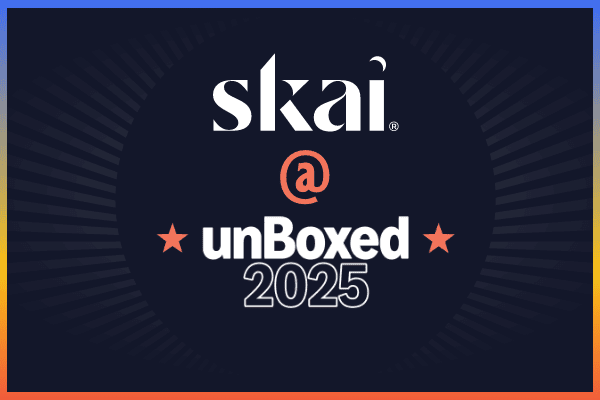Summary
The end-of-the-year shopping season is a pivotal period for retail media both for revenue and a preview of trends shaping the year ahead. In Q4 2024, spending climbed 23% YoY and 18% QoQ, driven by efficient increases in clicks and impressions. Marketers embraced platform diversification, event-driven campaigns, and full-funnel strategies like DSP to achieve efficient growth. As retail media evolves, staying ahead of trends and adapting strategies will be key to scaling success and thriving in 2025.
Q4 is the most critical quarter for retail media, not just because of holiday demand but because it often sets the tone for the subsequent year. It’s a time when brands push hard with new product launches, experiment with campaigns, and test strategies to benefit from the increased conversion activity. As a result, what happens in Q4 provides a unique window into emerging trends and serves as a preview for what’s to come in 2025.
Q4 2024 closed out an incredible year for retail media, filled with big wins and new challenges. Based on ad spend from Skai clients, retail media spending surged by +23% year-over-year (YoY) and +18% quarter-over-quarter (QoQ) as advertisers leaned heavily into upper-funnel campaigns and took full advantage of holiday shopping momentum. Remarkably, this growth was driven by increased clicks and impressions, with CPCs rising only +3% YoY. This demonstrates that advertisers scaled their efforts efficiently—a testament to the growing sophistication of retail media strategies and the ability of the channel to deliver results without a squeeze on supply.
To help add context to this analysis, we’ll also share insights from our upcoming annual survey of retail media advertisers in our State of Retail Media report. Its findings and the trends we observed in Q4 provide valuable lessons for advertisers planning their strategies in the year ahead.
Key Takeaways from Q4 2024
The following are four key insights from the Q4 2024 period that highlight the trends shaping retail media’s future, with more details explained in the deeper analysis below.
Retail media spending surged efficiently
Retail media saw impressive YoY and QoQ spending growth in Q4 2024, driven by more clicks and impressions rather than higher CPCs. This showcases the maturation of retail media marketers who scaled their campaigns effectively without inflating costs.
The diversification of retail media continues
Amazon and Walmart remain retail media leaders, but smaller platforms are growing faster with lower CPCs, attracting advertiser interest. At the same time, ad format diversification is accelerating, with DSP campaigns seeing rapid growth as marketers balance upper- and lower-funnel strategies.
Event-driven strategies matter
Big events like Amazon’s October sale, Black Friday, and Cyber Monday brought huge spikes in spending but also performance. Adjusting budgets and making changes in real time is critical for capturing the best opportunities during these peak periods.
Retail media varies by industry
Spending patterns and CPC trends differed across industries in Q4, showing how retail media strategies are becoming more specialized—another sign of channel maturation. Marketers are now customizing their approaches based on the unique needs of their category to get the best results.
Deeper dive into Q4 2024’s key takeaways
Big growth with efficiency
By the Numbers, Based on Spending From Skai Clients
- Spending increased +23% YoY and +18% QoQ, reflecting robust growth across the channel.
- Clicks grew, while impressions grew even faster, highlighting greater upper-funnel activity.
- CPCs rose by just +3% YoY, with CTR holding steady at -8% YoY, indicating efficiency despite rising spend.
The Big Picture
Q4 2024 was a testament to the growing maturity of retail media. Unlike many other advertising channels where spending growth typically drives CPC spikes, retail media achieved significant gains in clicks and impressions while maintaining cost efficiency. The modest +3% YoY increase in CPCs suggests that marketers were able to expand their campaigns without facing significant cost inflation. This also meant that supply—ad inventory—kept pace with demand during the holiday shopping season.
The standout stat is the significant growth in impressions beyond search-triggered sponsored ads, reflecting the channel’s growing emphasis on upper-funnel activity, such as DSP awareness campaigns. Coupled with steady CTRs, these trends signal that retail media marketers are becoming more sophisticated in balancing full-funnel strategies with efficiency. This ability to scale spending while maintaining performance bodes well for the channel’s continued evolution in 2025.
Action Plan
- Build scalable growth opportunities. Identify ways to expand campaigns without driving up CPCs, such as leveraging upper-funnel formats like DSP to build impressions while preserving cost efficiency.
- Monitor inventory dynamics closely. Keep an eye on ad supply trends to ensure spending growth aligns with available opportunities, particularly during peak shopping periods.
- Continue optimizing for full-funnel efficiency. Balance upper-funnel and lower-funnel campaigns to drive both awareness and performance while maintaining cost control.
The diversification of retail media platforms and formats evolution
By the Numbers
- Amazon CPCs rose +6% YoY, while smaller platforms maintained lower CPCs and drove faster click growth.
- Sponsored Products accounted for 73% of total retail media spending, but DSP spending grew faster than any other format in Q4.
- Offsite Display/DSP campaigns now play a larger role in driving awareness and engagement, reflecting a more balanced full-funnel approach.
The Big Picture
Retail media’s continued diversification is evident in how marketers are evolving their platform and ad format strategies. While Amazon and Walmart still dominate spending, smaller platforms have gained traction by offering lower CPCs and faster click growth, providing advertisers with more cost-effective ways to expand their reach. This trend highlights the importance of balancing ad spend across multiple networks, particularly as competition intensifies on the larger platforms.
At the same time, ad format diversification reshapes how marketers approach retail media. Sponsored Products remain the foundation for conversion-focused campaigns, but DSP spending is growing rapidly as advertisers expand into upper-funnel strategies like awareness and consideration. This shift reflects the growing maturity of the channel, as advertisers look to create full-funnel campaigns that maximize both reach and performance.
Together, these trends signal a more sophisticated approach to retail media planning, where marketers must strategically balance platform investments and format choices to stay competitive in an evolving landscape.
Action Plan
- Balance platform investments strategically. Allocate budgets across Amazon, Walmart, and smaller networks to balance cost efficiency with scale. Track platform-specific performance trends to identify opportunities for diversification.
- Expand upper-funnel efforts with DSP. Use DSP campaigns to reach shoppers earlier in their journey, focusing on awareness and consideration alongside conversion. This is particularly effective for seasonal promotions or new product launches.
- Optimize ad formats for platform strengths. Tailor formats to specific platform capabilities, leveraging Sponsored Products for high-intent shoppers on Walmart and DSP for awareness campaigns on Amazon.
Event-driven strategies are essential
By the Numbers, Based on Spending From Skai Clients
- Spending spikes during Black Friday and Cyber Monday contributed to the +18% QoQ increase in total retail media spend.
- CTR and conversions peaked during these events, while CPCs fluctuated significantly based on competition.
The Big Picture
Event-driven campaigns delivered significant results, with major retail events driving spending and performance in Q4 2024, like Amazon’s Big Deal Days, Black Friday, and Cyber Monday. During peak hours from 8 to 10 p.m. EST on Cyber Monday, shoppers spent $15.8 million per minute, contributing significantly to the overall sales. Holiday moments presented unique opportunities for capturing high-intent shoppers but required flexible, dynamic budgeting to respond to competitive bidding.
Planning ahead is critical for event success, but so is adaptability. Marketers who reserved portions of their budgets for real-time bidding or adjusted creatives during peak demand periods outperformed those who relied solely on pre-planned campaigns. As competition increases, leaning into these strategies will be necessary to maximize returns during key events in 2025.
Action Plan
- Create flexible budgets for peak periods. Reserve a percentage of your budget for real-time adjustments during major events. Use historical performance data to guide planning, but stay ready to adapt.
- Invest in automation for event-driven bidding. Use AI tools to dynamically adjust bids and creative placements during high-competition periods. Automation ensures efficiency and responsiveness.
- Build creatives tailored for urgency. Focus on event-specific messaging and time-sensitive offers during peak periods to capture high-intent shoppers.
Retail media isn’t the same for every vertical
By the Numbers, Based on Spending From Skai Clients
- Apparel CPCs remained lower than other categories, while Health & Beauty maintained some of the highest.
- Spending trends varied significantly by vertical, reflecting diverse strategies across industries.
The Big Picture
Retail media is maturing, and Q4 showcased how industry-specific dynamics increasingly shape spending patterns and CPC trends. Apparel’s lower CPCs make it a cost-efficient vertical for testing new strategies, while premium categories like Health and Beauty require more robust budgets to maintain competitive bids. These variations underscore the importance of tailoring campaigns to vertical-specific needs.
Sophisticated retail media programs now reflect category-level best practices, enabling marketers to maximize ROI while managing costs. Insights from the 2025 State of Retail Media report show that vertical-specific strategies are becoming more common as advertisers deepen their understanding of category dynamics. This evolution reflects a positive step toward long-term channel maturity.
Action Plan
- Tailor bids and budgets by category. Analyze historical CPC trends and competitive intensity to allocate resources effectively across verticals.
- Analyze category-specific trends. Use historical CPC and performance data to identify your vertical’s key seasonal opportunities and competitive dynamics. Build strategies tailored to these insights.
- Leverage creative strategies for differentiation. Use compelling, category-relevant creatives to stand out in crowded verticals and increase engagement across all ad formats.
Looking ahead. Preparing for retail media’s next evolution
Q4 demonstrated how 2024 solidified retail media as a vital channel and the new challenges accompanying this maturation. Diversification, event-driven campaigns, ad format optimization, and vertical-specific planning are now essential strategies for success. The brands that embraced these approaches in 2024 didn’t just meet goals—they built a foundation for growth this year.
2025 will bring both opportunities and competition. Success will depend on optimizing ad formats, tailoring strategies to your category, and exploring new platforms. Retail media has become the backbone of modern marketing, and staying agile and innovative will be key to thriving in the year ahead.
Keep an eye out for our 2025 State of Retail Media report, highlighting the shift toward full-funnel strategies, incrementality, and data-driven decision-making. Success will require moving beyond ROAS to adopt clear measurement frameworks, automation, and precise planning. Retail media is evolving, and those who adapt will stay ahead.
We wish you success in 2025 and beyond!
Methodology
The quarterly analysis reflects Skai accounts with 15 consecutive months of retail media spending. Some outliers have been excluded. Prime Day analysis comprises all Amazon advertisers on the Skai platform over a 32-day period. This quarterly analysis is based on spending from Skai clients only and should not be interpreted as a fully accurate representation of channel or individual publisher performance.







